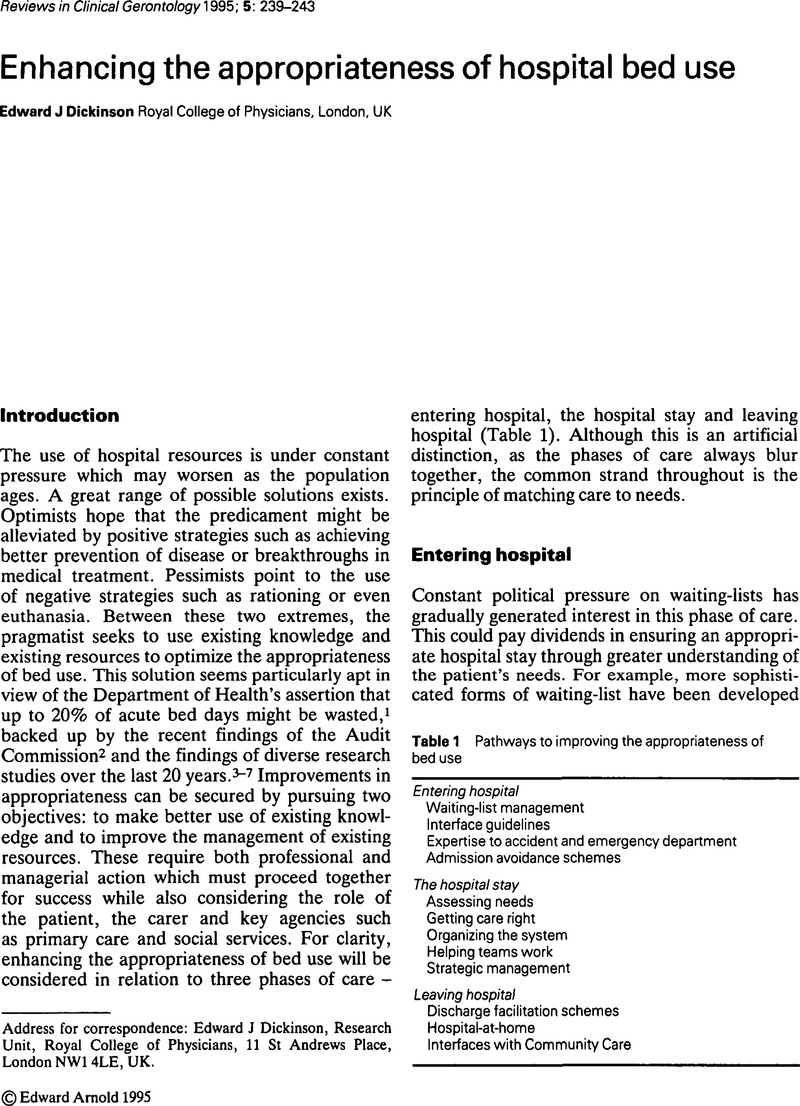47ABC (Appropriateness of bed use census) study group. Impact of the introduction of the new Community Care arrangements on the hospital stays of elderly people. Results of the ABC (appropriateness of bed use census) project.
1995 (in preparation).
Google Scholar 